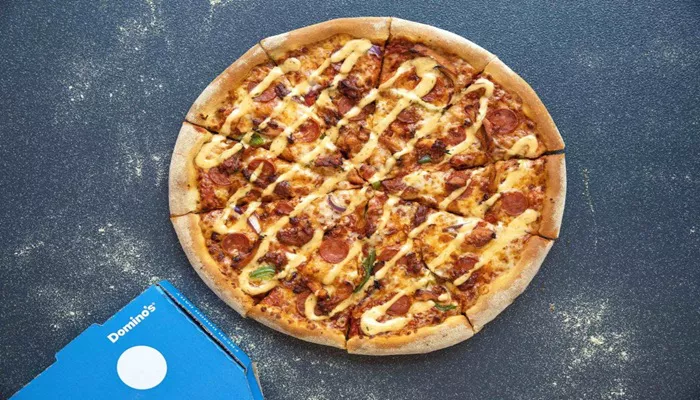Starting a Domino’s Pizza franchise can be an exciting venture for aspiring entrepreneurs. Known for its efficient delivery service and delicious pizzas, Domino’s has established itself as a leader in the fast-food industry. This article provides a detailed overview of the costs associated with opening a Domino’s franchise, including initial investments, ongoing fees, and other financial considerations.
Introduction to Domino’s Pizza Franchise
Domino’s Pizza was founded in 1960 and has since grown to become one of the largest pizza chains in the world. The company offers a variety of pizza styles, sides, and desserts, appealing to a wide range of customers. As a franchise, Domino’s provides its franchisees with a proven business model, comprehensive training, and support. However, starting a franchise comes with its own set of financial obligations.
Before diving into the financial requirements, it is essential to understand what operating a Domino’s franchise entails.
Franchisees must adhere to Domino’s operational standards, marketing strategies, and customer service protocols. This ensures that each location maintains the quality and brand reputation that customers expect.
Initial Investment
The initial investment to open a Domino’s franchise varies significantly based on location, size, and other factors. Here’s a breakdown of the typical costs:
SEE ALSO: How Much Is A Junior Whopper Meal at Burger King
1. Franchise Fee
The initial franchise fee for a Domino’s Pizza franchise is typically around $10,000. This fee grants the franchisee the rights to operate under the Domino’s brand and access to its training and support systems.
2. Equipment and Inventory
Setting up a new location requires various equipment and inventory costs. This includes ovens, refrigerators, preparation tables, and point-of-sale systems. The cost for equipment can range from $100,000 to $250,000, depending on the size and type of the location.
3. Leasehold Improvements
Franchisees are responsible for customizing their locations to meet Domino’s standards. This may involve renovations or modifications to the space. Leasehold improvements can cost between $150,000 and $300,000.
4. Initial Inventory
To operate effectively from day one, franchisees must stock their inventory with food supplies, packaging materials, and other necessary items. Initial inventory costs typically range from $10,000 to $15,000.
5. Marketing Expenses
Domino’s encourages franchisees to invest in local marketing to build brand recognition. Franchisees should budget around $5,000 to $15,000 for initial marketing campaigns.
6. Other Startup Costs
Other miscellaneous startup costs, such as utilities, insurance, and business licenses, can amount to $5,000 to $10,000.
Total Initial Investment
Adding all these expenses together, the total initial investment for a Domino’s Pizza franchise generally ranges from $250,000 to $500,000.
This investment covers everything from the franchise fee to equipment and initial marketing efforts.
Ongoing Costs
Once the franchise is up and running, several ongoing costs will be incurred. Understanding these fees is crucial for financial planning.
1. Royalty Fees
Domino’s charges a royalty fee based on the franchise’s gross sales. This fee is typically 5% of total sales. Royalty fees contribute to the overall brand support, marketing, and research and development.
2. Advertising Fees
In addition to the royalty fees, franchisees must contribute to the national marketing fund. This fee is usually around 3% of gross sales. This fund is used for national advertising campaigns that benefit all franchisees.
3. Other Operating Costs
Franchisees should also budget for ongoing operating costs, which include:
Rent: Depending on the location, rent can vary widely. Franchisees should expect to pay anywhere from $2,000 to $10,000 per month.
Labor Costs: Employee wages, benefits, and training will also add to operating expenses. This can range from $10,000 to $30,000 per month, depending on the size of the staff.
Utilities and Supplies: Monthly expenses for utilities, packaging, and other supplies may amount to around $3,000 to $7,000.
Summary of Ongoing Costs
Taking into account these ongoing expenses, franchisees should be prepared for monthly costs that can range from $20,000 to $50,000. This can vary based on sales volume and location.
Financing Options
Many aspiring franchisees may require financing to cover the initial investment. Several options are available:
Bank Loans: Traditional loans from banks can be a reliable source of financing. It’s essential to present a solid business plan to secure a loan.
SBA Loans: The Small Business Administration (SBA) offers loans specifically for small businesses, including franchises.
These loans often have favorable terms.
Franchise Financing Companies: Some companies specialize in financing franchise opportunities. They understand the franchise model and can provide tailored solutions.
Personal Savings: Many franchisees use personal savings or investments to fund their business. This option avoids debt but requires careful financial planning.
Financial Performance
Understanding the financial performance of a Domino’s franchise is crucial. On average, a well-run Domino’s location can generate substantial sales. According to industry reports, some Domino’s franchises can achieve gross sales of $800,000 to $1,500,000 annually.
However, profits will vary based on location, management, and operational efficiency. Franchisees should aim for a profit margin of 10% to 20%, depending on their control over costs and sales performance.
Conclusion
Opening a Domino’s Pizza franchise requires a significant initial investment and ongoing financial commitment. Potential franchisees should carefully assess their financial situation and business goals before making a decision. Understanding the costs involved, from franchise fees to ongoing operating expenses, is crucial for success.
Related topics:
- Why Did Burger King Discontinue The Ch King?
- How Does First Watch’s Training Program Support New Franchisees
- The 6 Best Burger King Meal in 2024

